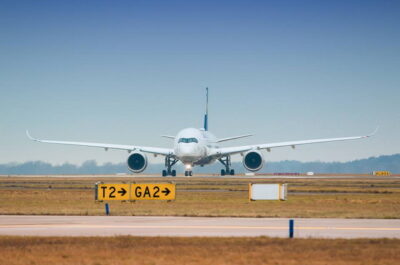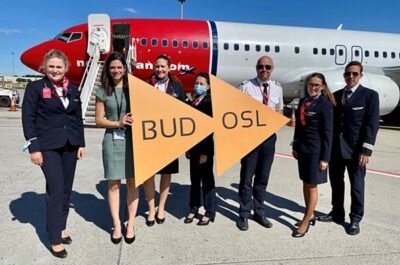In response to increasing passenger demand, airlines will be able to develop new in-flight internet services. Airlines will remain in charge of what services they choose to equip their planes with (industry surveys indicate SMS and email are of greater interest to passengers than voice).
The European Commission has adopted new rules that allow the latest wireless communication technology to be used by passengers on board aircraft flying over the European Union.
This means that from now onwards, spectrum for 3G (UMTS) and 4G (LTE) communications may be used above an altitude of 3,000 metres. Until now only 2G (GSM) has been permissible on-board aircraft flying in the EU.
This EU decision creates the possibility for airlines – rather than a right for passengers – to allow use of smart phones and tablets during flights.
|
Role of key players |
|
|
European Commission |
Allows use of spectrum during flights |
|
European Aviation Safety Authority (EASA) |
Will issue guidance on use of devices during flights by end of November |
|
Airlines operating in the EU |
Will decide whether to take advantage of this new option |
What does this mean for airlines?
In response to increasing passenger demand, airlines will be able to develop new in-flight internet services. Airlines will remain in charge of what services they choose to equip their planes with (industry surveys indicate SMS and email are of greater interest to passengers than voice).
What does this mean for passengers?
If airlines take advantage of the new possibilities, passengers will have access to better internet services, at times when their aircraft is flying above 3000m altitude. So if you want to surf social networks during your flight, or send emails with attachments, this decision makes that possible.
Background
Decisions are EU laws relating to specific cases. This Commission Decision confers rights, immediately, on airlines which enable them to put in place improved mobile communication on-board aircraft (MCA) systems, making use of the pre-existing spectrum bands for 3G and 4G. These are the 2100MHz band for 3G, and the 1800MHz band for 4G. Detailed safety guidance is the domain of the European Aviation Safety Authority (EASA) who will issue guidance in November 2013.
EU rules
Until 2008, mobile communications on-board aircraft (MCA) were possible using telephone systems owned by the airline. Since 2008, 2G (GSM) communication became possible.
For safety reasons these services are available only at altitudes above 3,000 metres.
Over 200 aircrafts with destinations in the EU are suitably equipped to comply with the EU rules issued in 2008. The new rules are based on studies which the European Conference of Postal and Telecommunications Administrations (CEPT) has made for the European Commission.
Facts about Mobile Communications On-board Aircraft (MCA) technology
Although still in its infancy, MCA is a growing industry, with data traffic increasing by over 300% between 2011 & 2012.
MCA is identical to normal mobile roaming in that passengers are billed through their service provider. The tariffs applied usually correspond to “Roaming: rest of the world” prices. Wi-Fi is also used for MCA but is not subject to specific rules because its low power does not pose interference risk with ground-based radio services.
MCA does not cover the communication between the aircraft and the ground which is currently provided by satellite-based systems. New satellites should allow ten times greater capacity than what is available today.
Some European stakeholders are working on introducing a new “Direct air to ground” (DA2G) broadband technology, which would bypass satellites.
How do MCA systems work?
The signal is received by an antenna on board the aircraft and sent to the ground network via a satellite connection. The signal is limited in power to ensure it does not interference with other communications.
The system is based on three main parts: the mobile terminals, the Network Control Unit, and the aircraft base station.
- Mobile terminals on aircraft: passengers increasingly wish to use their 3G or 4G mobile devices (smartphones, tablets, laptops etc.) on board aircraft to transfer data; the amount of data transferred on board already exceeds voice data.
- the Network Control Unit (NCU): is mounted on board the aircraft and is a kind of jammer which prevents mobile terminals connecting to, and interfering with ground-based systems, and ensure they connect only to an Aircraft Base Station (see below)
- Aircraft Base Station: the antenna to which mobile terminals connect; it takes the form of a cable running along the ceiling of the cabin.
Tatiana is the news coordinator for TravelDailyNews Media Network (traveldailynews.gr, traveldailynews.com and traveldailynews.asia). Her role includes monitoring the hundreds of news sources of TravelDailyNews Media Network and skimming the most important according to our strategy.
She holds a Bachelor's degree in Communication & Mass Media from Panteion University of Political & Social Studies of Athens and she has been editor and editor-in-chief in various economic magazines and newspapers.

































































































































































































































